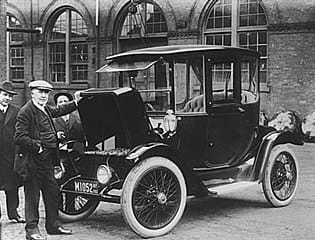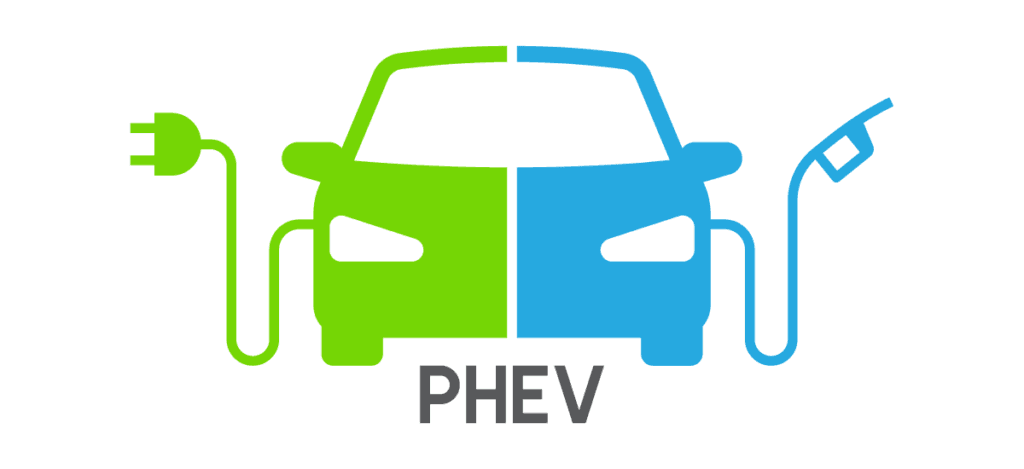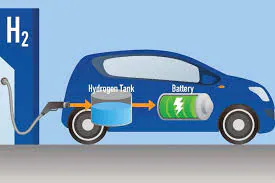Electric vehicles (EVs) are rapidly gaining popularity as a sustainable alternative to traditional gasoline-powered cars. Powered by electricity stored in batteries, EVs produce zero tailpipe emissions, making them a significant contributor to reducing air pollution and greenhouse gas emissions. The first electric car built by German engineer Andreas Flocken in 1888. Previous studies indicate that the high cost of the electric car, non-availability of charging infrastructure, time and range anxiety act as impediments to consumer adoption.

Types of Electric Vehicles
1. Battery Electric Vehicles (BEVs): Battery Electric Vehicles (BEVs) are revolutionizing the automotive industry by offering a sustainable and efficient alternative to traditional internal combustion engine vehicles. With the growing emphasis on reducing carbon emissions and combating climate change, BEVs are becoming increasingly popular among consumers and manufacturers alike.

2. Plug-in Hybrid Electric Vehicles (PHEVs): Plug-in Hybrid Electric Vehicles (PHEVs) represent a significant advancement in the automotive industry, combining the benefits of electric and gasoline power. These vehicles are designed to provide flexibility, reduced emissions, and improved fuel efficiency, making them an appealing option for environmentally conscious consumers.

3. Hybrid Electric Vehicles (HEVs): Hybrid Electric Vehicles (HEVs) are increasingly gaining popularity as a sustainable alternative to traditional gasoline and diesel vehicles. By combining an internal combustion engine (ICE) with an electric motor, HEVs offer improved fuel efficiency and reduced emissions, making them an attractive option for environmentally conscious consumers.

4. Fuel Cell Electric Vehicles (FCEVs): Fuel Cell Electric Vehicles (FCEVs) represent an innovative approach to sustainable transportation, using hydrogen as a fuel source to generate electricity. With zero tailpipe emissions and the potential for rapid refueling, FCEVs are gaining attention as a viable alternative to traditional gasoline vehicles and battery electric vehicles.

Benefits of Electric Vehicles
1. Environmental Friendliness:
- Lower emissions: EVs produce zero tailpipe emissions, reducing air pollution and greenhouse gas emissions.
- Reduced carbon footprint: When charged using renewable energy, the overall carbon footprint is significantly lower than that of gasoline vehicles.
2. Energy Efficiency:
- Energy Efficient: EVs are generally more energy-efficient than traditional gasoline-powered cars.
- Quiet operation: EVs operate more quietly than traditional vehicles.
3. Lower Operating Costs:
- Lower fuel costs: The cost of electricity is often lower than the cost of gasoline, leading to lower fuel costs for EV owners.
- Reduced maintenance: EVs have fewer moving parts and require less maintenance (e.g., no oil changes).
4. Tax Incentives:
- Many governments offer tax incentives and subsidies to encourage the adoption of EVs.
Challenges and Considerations
Charging Infrastructure:
- Availability: The need for widespread and convenient charging stations remains a challenge in many regions.
- Charging time: Charging can take longer compared to refueling a gasoline vehicle, although fast chargers are becoming more common.
Initial Cost:
- While prices are decreasing, the initial purchase price of EVs can still be higher than that of comparable gasoline vehicles, though incentives and rebates can help.
Range Anxiety:
- Many consumers worry about the limited range of some EVs compared to traditional cars. However, advancements in battery technology are continuously improving this aspect.
The Future of EVs
As battery technology continues to improve and charging infrastructure expands, EVs are poised to play a major role in reducing our reliance on fossil fuels and creating a cleaner, healthier planet. With advancements in autonomous driving technology, EVs could also revolutionize transportation and urban mobility.
Battery Technology: Ongoing research is focused on improving battery efficiency, capacity, and charging speed. Solid-state batteries and new chemistries are being explored. Another improvement is to decouple the electric motor from the battery through electronic control, using supercapacitors to buffer large but short power demands and regenerative braking energy.
Autonomous Driving: Autonomous driving is the concept of vehicles that can operate without human intervention. Many EV manufacturers are also exploring self-driving technology, which could transform the future of transportation. These vehicles, also known as self-driving cars, use artificial intelligence (AI) to make decisions and control their movements. They use sensors to collect real-time data about their environment, such as GPS, radar, sonar, LIDAR, and odometry
Sustainable Production: The focus on sustainable materials and manufacturing processes is increasing, making the entire lifecycle of EVs more eco-friendly. By reducing types of air pollution, such as nitrogen dioxide, EVs could prevent hundreds of thousands of early deaths every year, especially from trucks and traffic in cities.
Government Policies: Many countries are implementing incentives, subsidies, and regulations to encourage the adoption of electric vehicles and phase out fossil fuel-powered cars. The IEA suggests that taxing inefficient internal combustion engine vehicles could encourage adoption of EVs, with taxes raised being used to fund subsidies for EVs. Government procurement is sometimes used to encourage national EV manufacturers. Many countries will ban sales of fossil fuel vehicles between 2025 and 2040.
Conclusion
Electric vehicles represent a significant shift in the automotive industry towards sustainability and innovation. As technology advances and infrastructure improves, EVs are poised to play a crucial role in reducing our environmental impact and transforming transportation.
Article: Government incentives for plug-in electric vehicles
See also: Electric car use by country